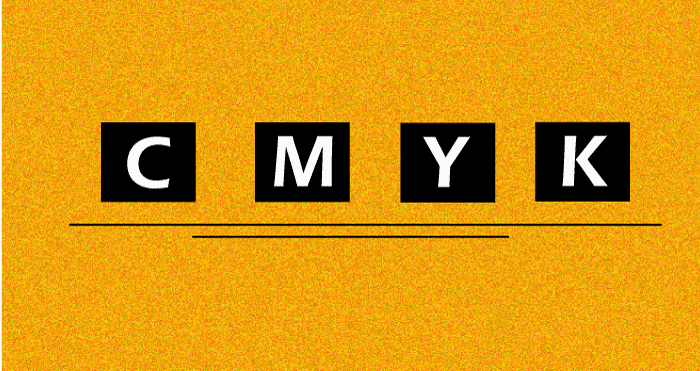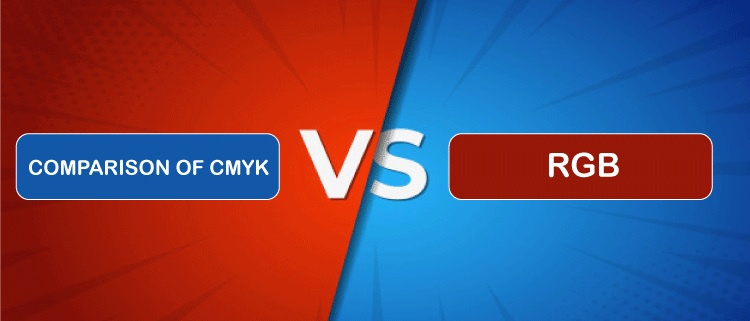What is the full form of CMYKCMYK: Cyan, Magenta, Yellow, and KeyCMYK stands for Cyan, Magenta, Yellow, and Key (black). CMYK is written out completely. The word "key" is taken from black's last letter since B already stands for blue. 
It is a four-color ink model that is utilized in color printing. Cyan, magenta, yellow, and black are the colors found on the four printing machine ink plates, sometimes called CMYK. The CMYK creates four distinct colors via a subtractive process. This technique subtracted the red, green, and blue colors from a white backdrop to reproduce the colors. Below are the results of subtraction:
The History of CMYK:The Eagle Printing Ink Company initially created CMYK color printing in 1906. They used examples to show how CMYK can create an infinite number of rich color tones when layered over a white backdrop. The CMYK Working Process:Halftoning is actually how CMYK printing operates. It creates a gradient-like look on a photograph by dispersing an image into dots of various sizes and spacing. The dots of primary colors printed in particular patterns can be partially saturated using halftoning. Using this method, we may create variations in color schemes, such as a 20% halftoned magenta color that the human eye perceives as pink. The CMYK printing process masks other colors, often on a white backdrop. Thus, the ink prevents that specific masked color's reflecting light. All the ink colors are combined to create the black color in CMYK. This would make production more expensive. So, instead of combining cyan, magenta, and yellow, black creates unsaturated and dark colors. CMYK's Uses:In projects involving colored printing, the CMYK is highly demanded. It works well for designs that must be reproduced in paint or ink. Below are a few applications for CMYK:
File Formats That CMYK Supports:Every file on a computer is stored using a standard format called a file. Knowing how to save CMYK files for the best color results is important. The three CMYK storage formats are listed below: Portable Document Formats (PDFs):Because it works with practically all programs, PDF is the best format for CMYK. Adobe Illustrator (AI):The default file format for CMYK is Adobe Illustrator (AI). Only Adobe Illustrator can use it. Encapsulated PostScript (EPS) Format:Because it works with vector programs, this is an excellent alternative to AI. Benefits of CMYK:The following is a list of CMYK's benefits: 1. Less color processing: In this procedure, color from a white background is removed as the technique. Less color processing while emphasizing printing. 2. More productivity: Due to its low cost and simple processing, CMYK is increasingly employed in mass-manufacturing garments. 3. Cost-cutting: Because subtractive coloring is utilized, printing with fewer colors is possible. This lowers total expenses. 4. Multiple applications: Because the CMYK coloring process is so widely used, we May use it for various materials and objects. The Drawbacks of CMYK:The following are some of the drawbacks of CMYK: CMYK utilizes a color-reducing approach that reduces brightness compared to the Red, Green, and Blue (RGB) coloring method, giving images a washed-out appearance. 1. Data loss: The CMYK image's original data is reduced due to its color-reducing approach. 2. Limited color range: The CMYK color mixture only creates a small, dull palette of colors. Additionally, the colors are presented crudely. A Comparison of CMYK and RGB:
Understanding the differences between the two most used color techniques can help you better understand CMYK. The table below compares CMYK and RGB and shows their differences. 1. CMYK uses Cyan, Magenta, Yellow, and Key channels. Red, Green, and Blue are the three channels it uses RGB. 2. CMYK uses a subtractive technique to create cool tones in various colors. RGB uses an additive technique to create vibrant color shades. 3. On various materials, colors are shown using ink. Print is done in CMYK. Colors are shown on the screen using light. Screens and digital communication channels both use the RGB color mode. 4. CMYK the light that is reflected causes the colors to be created. RGB the propagation of light is what creates the colors. The Conclusion:This post on CMYK in its full form will benefit you. FAQs about CMYKQuestion 1: What does CMYK's full name mean? Answer: In English, CMYK stands for Cyan, Magenta, Yellow, and Key (Black). Question 2: What are the applications of CMYK? Answer: Printing colored brochures, periodicals, clothing, stickers, etc., uses CMYK. Color Chart in CMYK Question 3: How does CMYK printing function? Answer: The subtractive coloring method underlies CMYK printing. It is a procedure that turns a background entirely white into cyan, magenta, and yellow by subtracting RGB. These three colors are blended to create the color black. In CMYK, the colors are replicated as a series of many small dots in a predetermined sequence. Question 4: What file types are utilized to hold CMYK? Answer: PDF, AI, and EPS file types may all hold CMYK.
Next TopicFull Form Lists
|
 For Videos Join Our Youtube Channel: Join Now
For Videos Join Our Youtube Channel: Join Now
Feedback
- Send your Feedback to [email protected]
Help Others, Please Share










